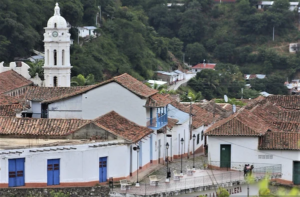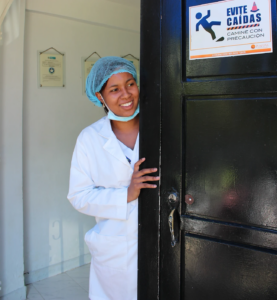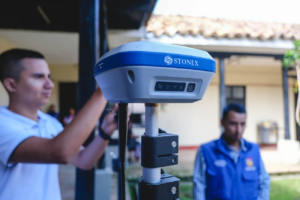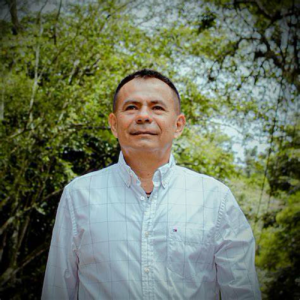Municipal Land Offices throughout Colombia are providing local leaders with the tools to execute major development projects.
A Town with Encanto
 The sleepy municipality of El Carmen was declared a National Heritage Site in 2005, but tourists did not start streaming in until 2016 when the government signed a Peace Accord with the FARC rebel group. Isolated in the lush mountains of Norte de Santander, the long-lasting conflict paradoxically served as a cushion to conserve its cobblestone streets and colonial houses, making it one of the country’s most authentic pueblos mágicos.
The sleepy municipality of El Carmen was declared a National Heritage Site in 2005, but tourists did not start streaming in until 2016 when the government signed a Peace Accord with the FARC rebel group. Isolated in the lush mountains of Norte de Santander, the long-lasting conflict paradoxically served as a cushion to conserve its cobblestone streets and colonial houses, making it one of the country’s most authentic pueblos mágicos.
Now municipal leaders are following through on a strategy to give visitors a better taste of their town in a breathtaking setting by improving the town’s malecón and opening up trails to beautiful viewpoints like the Cerro de la Cruz and the Filo de la Virgen. The first step was to make sure the parcels were formalized as municipal property. The Municipal Land Office, created and supported by USAID Land for Prosperity, provided the municipality with the tools and skills to administer the land and process the municipal land titles. Once the properties were formalized, El Carmen mobilized over $830,000 USD to invest in the projects.
Over the last two years, El Carmen’s Municipal Land Office has played a noticeable role in the formalization and titling of public properties, including schools, a police station, and the site of a new hospital in the town of Guamalito, which lies 10 kilometers north of El Carmen. In 2023, municipal leaders took the first steps in executing a $3 million USD ($12 billion COP) project to establish the town’s first hospital, which will serve its population of more than 3,800 people.
 For years, the residents of Guamalito and El Carmen had to travel two hours south to Ocaña to receive professional health care services. Last year, outgoing mayor, Wilfredo Gelvez, purchased a parcel neighboring the current health clinic in Guamalito as the hospital’s new home. But without the Municipal Land Office, administering the new piece of land would not have been so straightforward. In this case, the Municipal Land Office played a key role in managing the two parcels and transferring the land in the name of State-run Regional Noroccidental Abrego, which provides health services in El Carmen.
For years, the residents of Guamalito and El Carmen had to travel two hours south to Ocaña to receive professional health care services. Last year, outgoing mayor, Wilfredo Gelvez, purchased a parcel neighboring the current health clinic in Guamalito as the hospital’s new home. But without the Municipal Land Office, administering the new piece of land would not have been so straightforward. In this case, the Municipal Land Office played a key role in managing the two parcels and transferring the land in the name of State-run Regional Noroccidental Abrego, which provides health services in El Carmen.
“This is all possible thanks to the coordination between the Municipal Land Office and the government land agencies in our region. The formalization of public properties allows leaders to finance infrastructure projects in areas of public interest like recreation, education, and community centers,” says Gelvez.



 These stories are indicative of how land tenure issues lie below many investments in essential public services and infrastructure in Colombia’s rural municipalities. In Santander de Quilichao, the largest municipality in Northern Cauca, a region known for land conflicts and violence, land informality rates hover above 50 percent. More than half of all parcels do not have registered land titles.
These stories are indicative of how land tenure issues lie below many investments in essential public services and infrastructure in Colombia’s rural municipalities. In Santander de Quilichao, the largest municipality in Northern Cauca, a region known for land conflicts and violence, land informality rates hover above 50 percent. More than half of all parcels do not have registered land titles. Recently, Santander de Quilichao’s Land Office and its 5 employees focused efforts on lifting a $3.5 million USD housing project off the ground. The Villa María housing complex, which is already connected to public services, is expected to provide a secure home for over 400 vulnerable families while providing a park and sports field for families. Santander de Quilichao’s Land Office already delivered the first 100 land titles to Villa María residents and expects to deliver the other 300 property titles in coming months.
Recently, Santander de Quilichao’s Land Office and its 5 employees focused efforts on lifting a $3.5 million USD housing project off the ground. The Villa María housing complex, which is already connected to public services, is expected to provide a secure home for over 400 vulnerable families while providing a park and sports field for families. Santander de Quilichao’s Land Office already delivered the first 100 land titles to Villa María residents and expects to deliver the other 300 property titles in coming months.